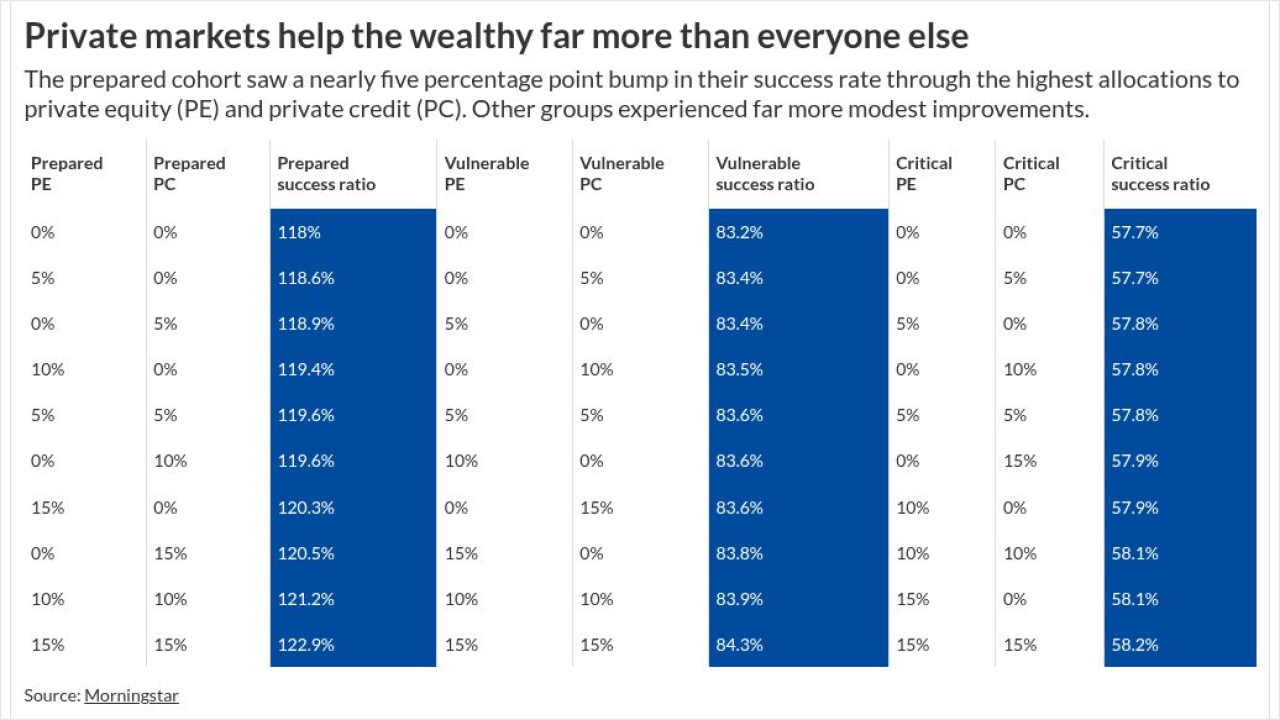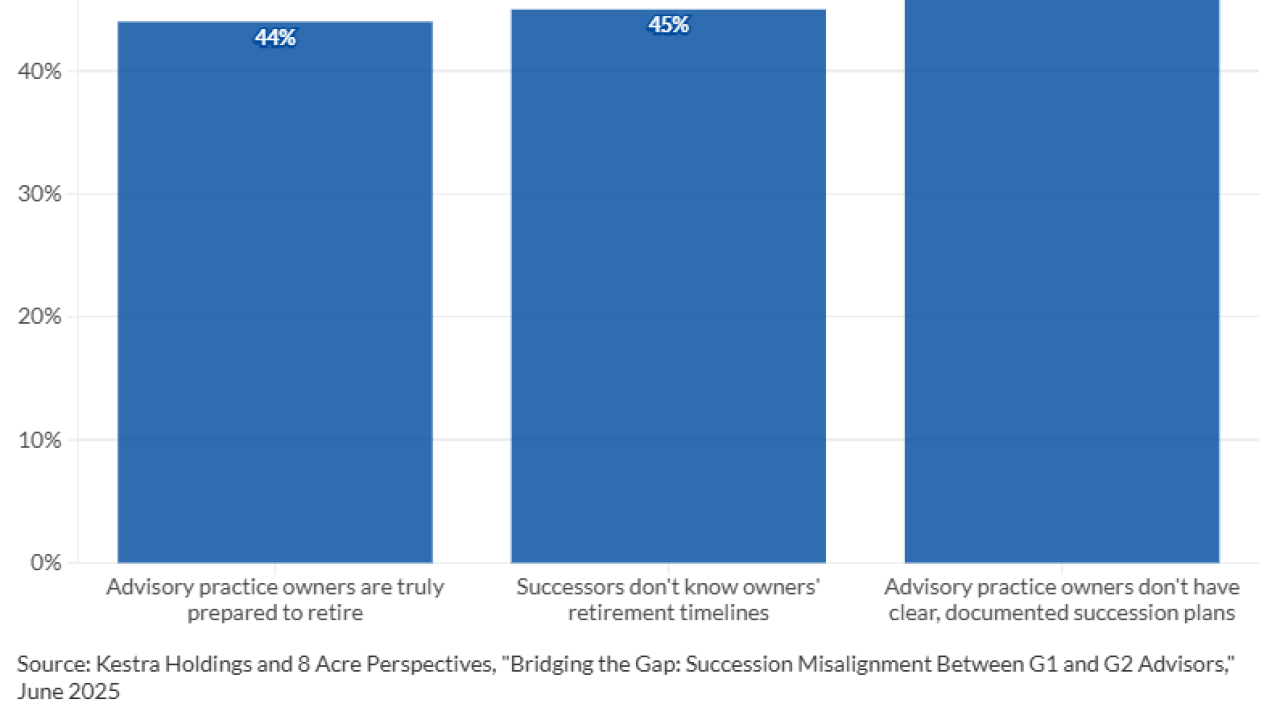BOSTON - Financial advisory principals who want to drive growth, increase the value of their equity and keep their best employees can’t afford to ignore an employee ownership plan, advocates say.
“It’s the most important thing you can do for your business,” said Rick Schwartz, managing director for business consulting at Schwab Advisory Services, speaking at the company’s annual Impact conference. “It’s the single greatest value driver you can employ.”
While an internal ownership strategy is often associated with a succession plan for owners beginning to think of retirement, Schwartz said it’s more accurate to think of employee ownership as a business continuity plan.
Many owners don’t transition ownership to an internal successor because they are either unprepared, have not identified a strong internal successor or don’t know how to set one up for the new owners.
DON’T WAIT
“Don’t wait until you’re 60 to start,” Schwartz urged attendees. “It can three to 10 years to implement a succession transition plan.”
Why begin an internal transition plan at all? Owners will be able to retain key talent, he said, in addition to strengthening their business culture by controlling the client and employee experience.
What’s more, firms using an employee ownership model grow faster, Schwartz asserted.
In 30 years of consulting, “I’ve never seen a firm with that model that didn’t grow faster than a firm where the owners didn’t share equity.”
So what do firms need to do?
- Get clear on what’s important. Preserving a personal and professional legacy inside and outside the business is paramount for most owners, Schwartz noted. Principals also want to maintain client trust and loyalty, keep their best people, and make sure the business grows and is sustainable.
- Create a shared vision. Owners need to identify and engage potential owners, Schwartz emphasized. Once they do focus on “high-potential personnel,” he said, most principals look for “someone who thinks like an owner,” can function as an entrepreneur and assume many roles in the firm. Present and future owners also need to understand that the new owner must have the ability to drive business, Schwartz said. In additionn, there needs to be an assessment of options, risks and rewards for the business, and agreement on how to value the operation and fund and schedule the transition. “You want to agree on the path forward,” Schwartz said. “And it’s extraordinarily important that the entire process be characterized by fairness, affordability and transparency.”
- Formalize the transition. This step starts – but shouldn’t end – with valuation, Schwartz told advisors. Valuation drivers include sustained growth, risk minimization and the quality of cash flow.
Advisory firms are usually valued by a multiple of revenue (often too simplistic), a multiple of EBIDTA, or a hybrid multiple of revenue and earnings or discounted cash flow, a methodology usually used for larger firms with assets over $1 billion. Many owners apply discounts ranging from 15% to 40% to the initial tranche of shares transferred to the new owners, Schwartz said. “They want the next generation to be motivated and have an asset that can grow,” he explained.
Most financing is done internally, with long-term payments of notes averaging about seven years, according to Schwartz. And most owners insist that sellers put down a down payment of at least 10% so they “have skin in the game,” Schwartz said.
MAINTAIN MENTORING ROLES
During the transition period, buyers tend to be concerned with the continuing role of the sellers, Schwartz said. Buyers want the current owners to maintain both their rainmaking and mentorship roles.
Sellers tend to be concerned with future performance of the new owners. As a result, Schwartz recommended that buy-sell agreements include performance measurement clauses and clawback provisions.
Read More:





